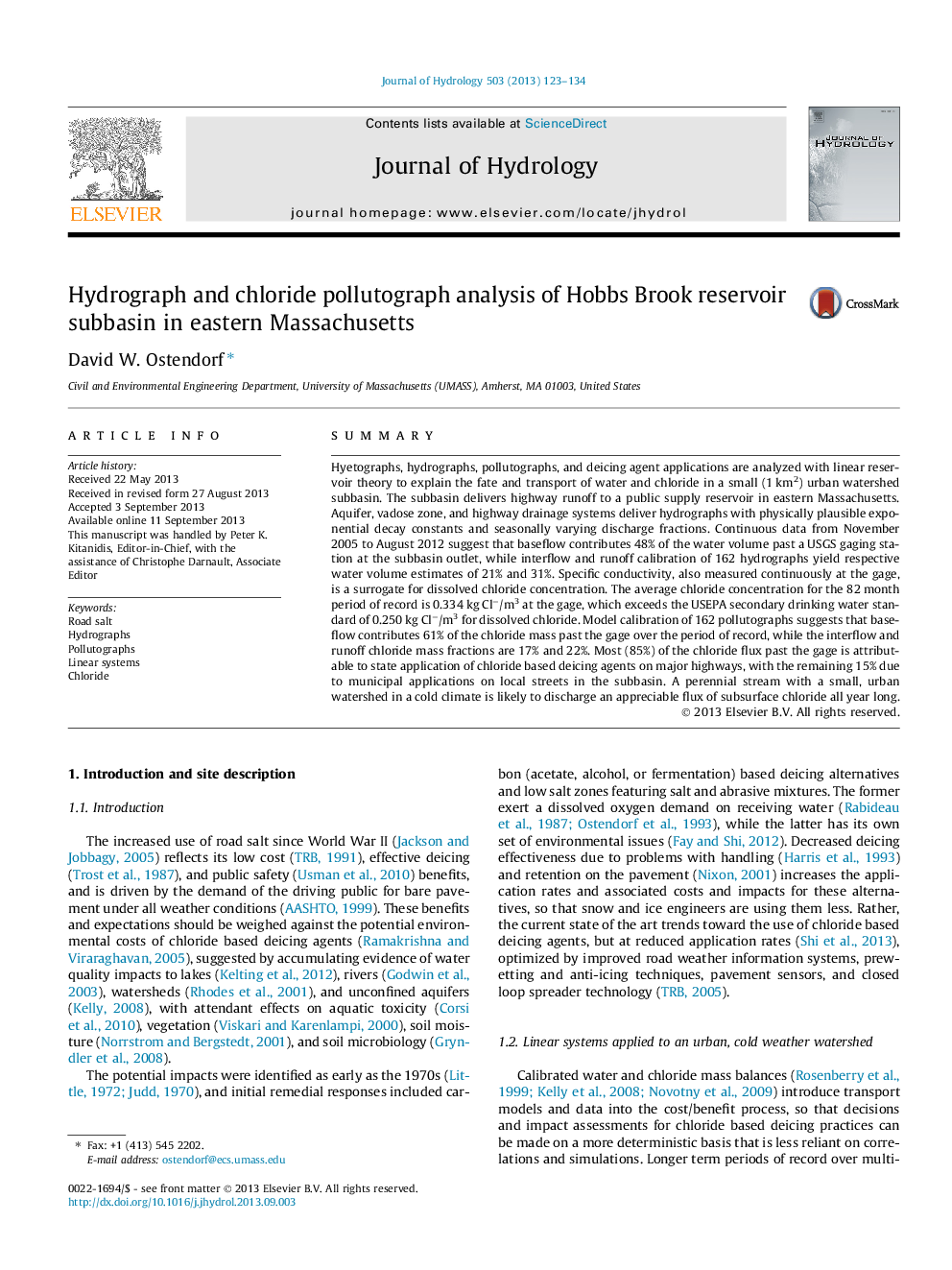| کد مقاله | کد نشریه | سال انتشار | مقاله انگلیسی | نسخه تمام متن |
|---|---|---|---|---|
| 4576191 | 1629945 | 2013 | 12 صفحه PDF | دانلود رایگان |

• We apply linear hydrograph and chloride pollutograph models to an urban watershed.
• USGS gage data yield plausible decay constants for runoff, interflow, and baseflow.
• Baseflow contributes 48% of water volume and 61% of road salt chloride mass.
• Interflow fractions are 21% and 17%, surface runoff fractions are 31% and 22%.
• Data and theory attribute 85% and 15% of the chloride to state and local sources.
SummaryHyetographs, hydrographs, pollutographs, and deicing agent applications are analyzed with linear reservoir theory to explain the fate and transport of water and chloride in a small (1 km2) urban watershed subbasin. The subbasin delivers highway runoff to a public supply reservoir in eastern Massachusetts. Aquifer, vadose zone, and highway drainage systems deliver hydrographs with physically plausible exponential decay constants and seasonally varying discharge fractions. Continuous data from November 2005 to August 2012 suggest that baseflow contributes 48% of the water volume past a USGS gaging station at the subbasin outlet, while interflow and runoff calibration of 162 hydrographs yield respective water volume estimates of 21% and 31%. Specific conductivity, also measured continuously at the gage, is a surrogate for dissolved chloride concentration. The average chloride concentration for the 82 month period of record is 0.334 kg Cl−/m3 at the gage, which exceeds the USEPA secondary drinking water standard of 0.250 kg Cl−/m3 for dissolved chloride. Model calibration of 162 pollutographs suggests that baseflow contributes 61% of the chloride mass past the gage over the period of record, while the interflow and runoff chloride mass fractions are 17% and 22%. Most (85%) of the chloride flux past the gage is attributable to state application of chloride based deicing agents on major highways, with the remaining 15% due to municipal applications on local streets in the subbasin. A perennial stream with a small, urban watershed in a cold climate is likely to discharge an appreciable flux of subsurface chloride all year long.
Journal: Journal of Hydrology - Volume 503, 30 October 2013, Pages 123–134